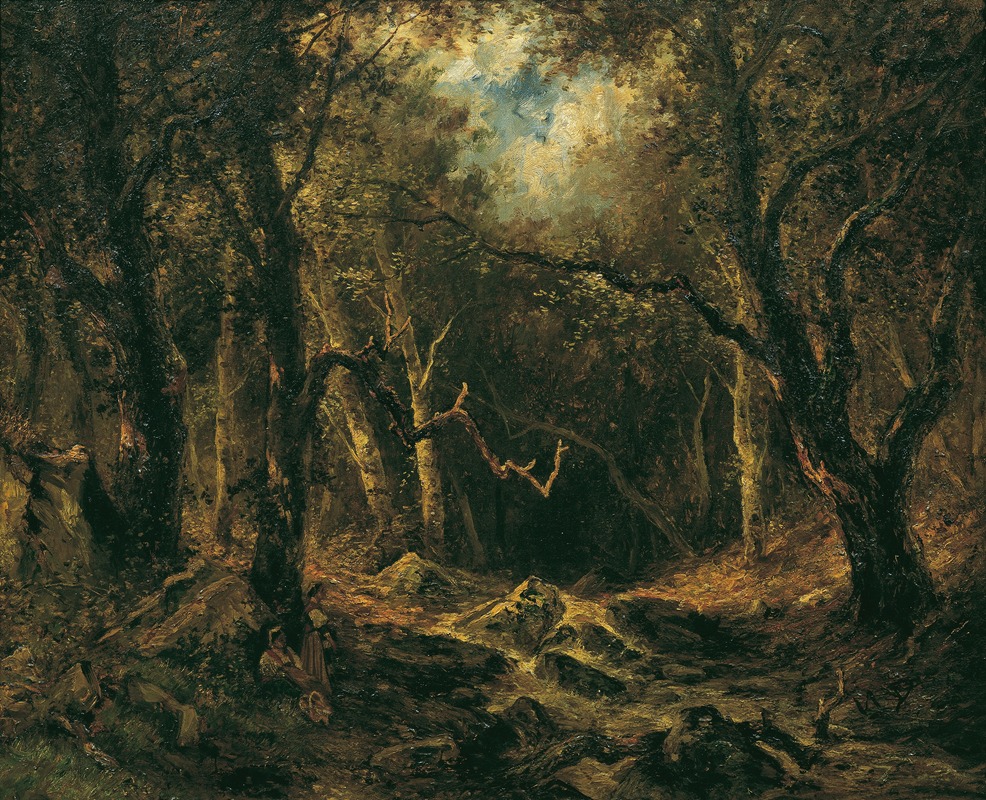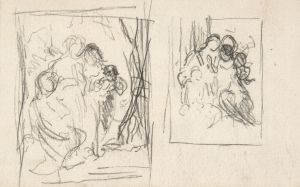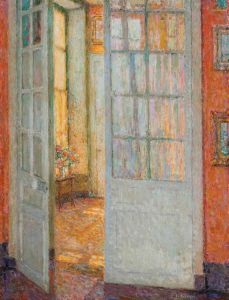
Waldinneres
A hand-painted replica of Narcisse-Virgile Diaz de La Peña’s masterpiece Waldinneres, meticulously crafted by professional artists to capture the true essence of the original. Each piece is created with museum-quality canvas and rare mineral pigments, carefully painted by experienced artists with delicate brushstrokes and rich, layered colors to perfectly recreate the texture of the original artwork. Unlike machine-printed reproductions, this hand-painted version brings the painting to life, infused with the artist’s emotions and skill in every stroke. Whether for personal collection or home decoration, it instantly elevates the artistic atmosphere of any space.
Narcisse-Virgile Diaz de la Peña was a prominent 19th-century French painter associated with the Barbizon School, a movement that emphasized naturalism and was a precursor to Impressionism. One of his notable works is "Waldinneres," which translates to "Forest Interior" in English. This painting exemplifies Diaz de la Peña's fascination with the natural world and his skill in capturing the interplay of light and shadow within forested landscapes.
"Waldinneres" is a testament to Diaz de la Peña's ability to convey the serene and mystical qualities of the forest. The painting typically features a dense woodland scene, where light filters through the canopy, creating dappled patterns on the forest floor. Diaz de la Peña's use of rich, earthy tones and his attention to detail in rendering the foliage and undergrowth contribute to the immersive quality of the work. The composition often draws the viewer's eye into the depths of the forest, inviting contemplation of nature's beauty and complexity.
Diaz de la Peña was known for his ability to infuse his landscapes with a sense of mood and atmosphere. In "Waldinneres," he achieves this through his masterful handling of light and shadow, which adds depth and dimension to the scene. The painting reflects the influence of Romanticism, with its emphasis on emotion and the sublime aspects of nature. At the same time, it aligns with the Barbizon School's focus on realism and the direct observation of the natural environment.
The Barbizon School, active primarily in the mid-19th century, was named after the village of Barbizon near the Forest of Fontainebleau in France. Artists associated with this movement, including Diaz de la Peña, sought to break away from the formalism of academic art and instead embraced plein air painting, capturing scenes directly from nature. This approach allowed them to study the effects of natural light and atmosphere, leading to more authentic and dynamic representations of the landscape.
Diaz de la Peña's work, including "Waldinneres," played a significant role in the transition from Romanticism to Impressionism. His emphasis on capturing fleeting moments of light and his loose, expressive brushwork would later influence Impressionist painters, who took these ideas further in their exploration of color and light. Although Diaz de la Peña's work was rooted in the traditions of landscape painting, his innovative techniques and focus on naturalism helped pave the way for future artistic developments.
"Waldinneres" is a reflection of Diaz de la Peña's deep appreciation for the natural world and his desire to convey its beauty and tranquility. The painting remains an important example of 19th-century landscape art and continues to be appreciated for its artistic and historical significance. Through works like "Waldinneres," Diaz de la Peña has left a lasting legacy, contributing to the evolution of landscape painting and influencing generations of artists who followed.


















